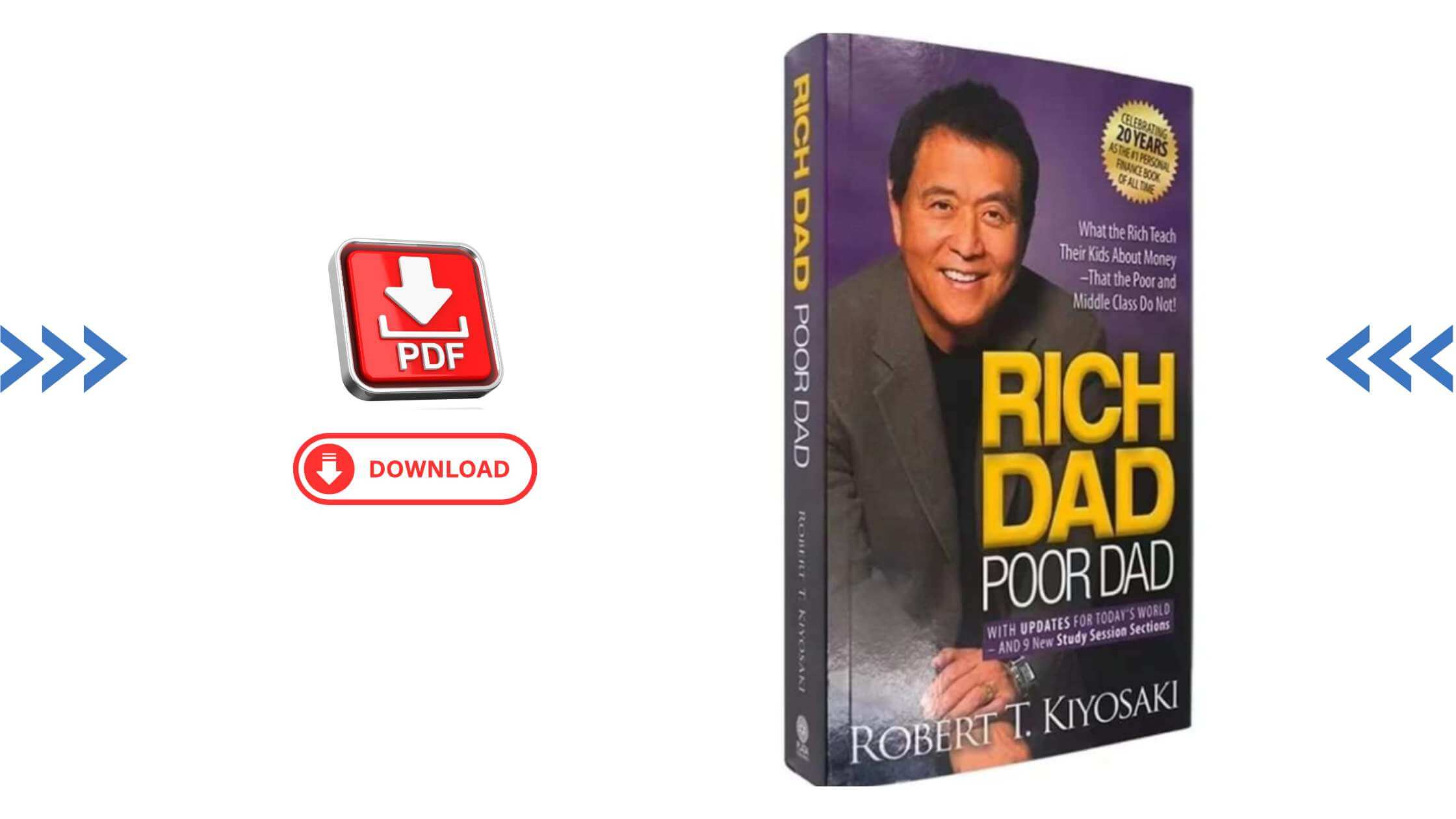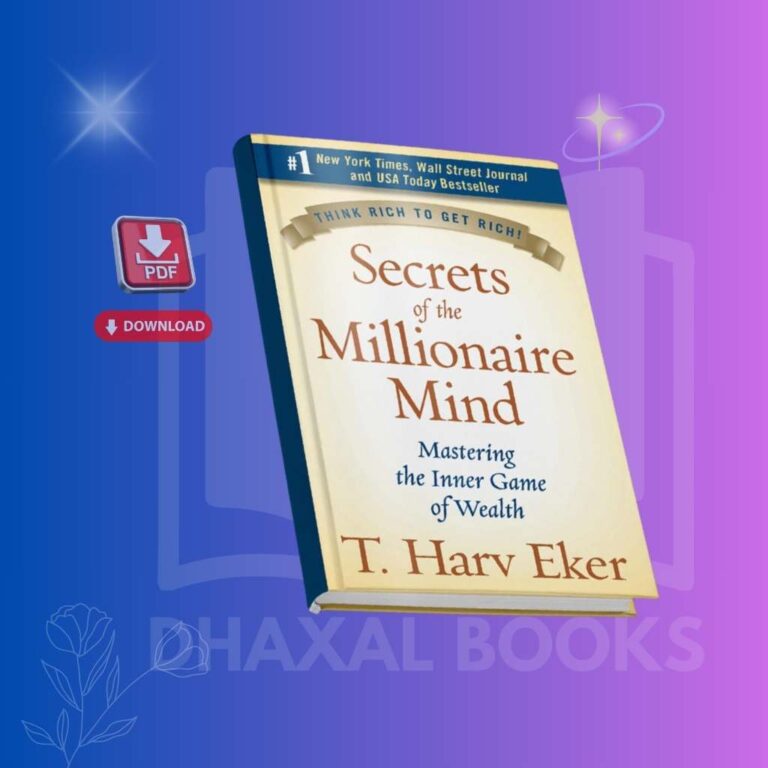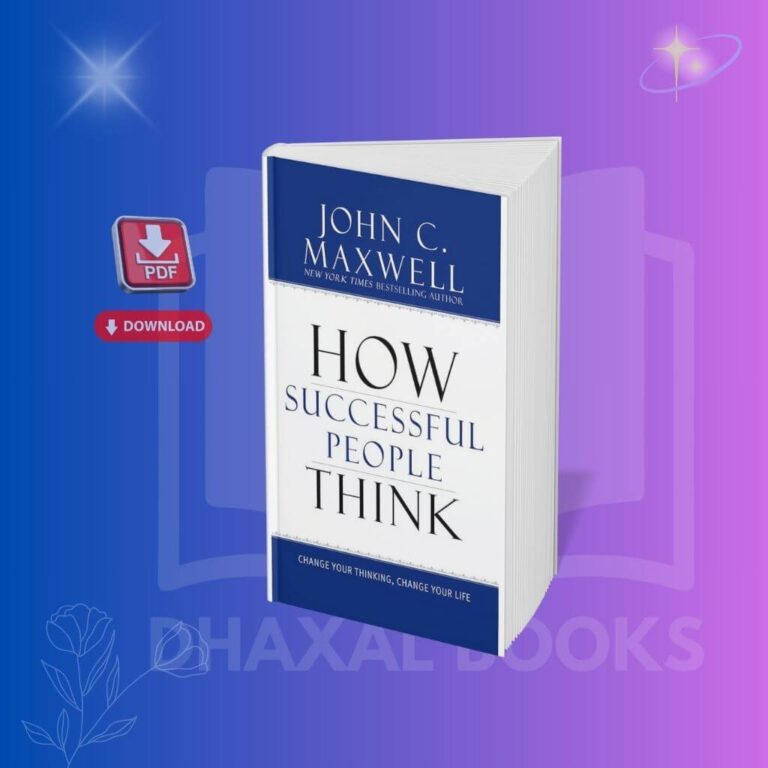Rich Dad Poor Dad is a 1997 book written by Robert T. Kiyosaki and Sharon Lechter. It advocates the importance of financial literacy, financial independence and building wealth through investing in assets, real estate investing, starting and owning businesses, as well as increasing one’s financial intelligence.
“Rich Dad Poor Dad is a starting point for anyone looking to gain
control of their financial future.”
USA TODAY

Authors: Robert Kiyosaki, Sharon Lechter
Rich Dad Poor Dad : Key Lessons on Money, Investing, and Financial Independence”
is a personal finance classic by Robert T. Kiyosaki about the financial mindsets and lessons formed between contrasting father figures in the life of Kiyosaki his biological father (the “Poor Dad”) and the father of his best friend (the “Rich Dad”). Kiyosaki elaborates the discrepancies that exist between the rich and the middle class in the aspects of views and approaches to money, investing, and financial independence.
Key Lessons from “Rich Dad Poor Dad:
1.The Importance of Financial Education
Often, formal education tends to ignore finance. According to Kiyosaki, understanding such things would allow a person to know how money works, manages it, and invests in it wisely for building wealth. Kiyosaki encourages learning assets, liabilities, income, and expenses to become a financially free person.
2.The Difference Between Assets and Liabilities
In the book, it clearly explains one of the basic concepts namely distinction between asset and liabilities. Kiyosaki states that for the rich, assets are important, things that bring cash into one’s pocket (investments, real estate, business), as opposed to the liabilities that the poorer and middle-class people acquire, which make one drain cash out (debt, unnecessary expenses). Wealth is acquired by acquiring income-producing assets.
3.The Power of Passive Income
This emphasized the establishment of streams of passive income, income that comes without requiring constant active participation in the endeavor. This can be realized, usually, through investments in real estate, stocks, businesses, or intellectual properties. Passive income enables people to become free by working smarter rather than harder.
4.Entrepreneurship and Investing
Unlike who worked for a fixed salary, Rich Dad believed in entrepreneurship and investment as one’s pathway to gain financial freedom. Kiyosaki urges readers be investor-minded, have their eyes peeled for opportunities, and take calculated risks when going through the process of building wealth over time.
5.Overcoming Fear and Taking Risks
One of the most significant barriers to financial success is fear, according to Kiyosaki. He insists that most people value what they gain too highly to take risks with it. They fear losing that money or fear their mistakes, and therefore, they cannot take risks in order to have the possibility of wealth.
Overcoming the fear of failure should be encouraged, as it is seen as a necessary step in learning. Also, financial courage is developed, which is fundamental in attaining financial freedom.
6.Mindset Matters
In his books, Kiyosaki argues mainly about the mindset difference between the wealthy and the middle class. The wealthy tend to think more broadly and take charge of
“Rich Dad Poor Dad” remains a timeless guide to understanding and mastering money, with insights that continue to inspire readers to think differently about wealth-building and financial freedom.
In conclusion, Rich Dad Poor Dad by Robert T. Kiyosaki will give you a new way of thinking about money and investment and even how one can become independent financially. In that light, Kiyosaki also tells through much of his transition to the lessons learned from his Such lessons include the knowledge that one must learn the language of money, the differentiation between assets and liabilities, and how to seek passive income.
He pushes a much deeper point about wealth-building: learning to stop working for money and learning to make money work for you.
It is embracing entrepreneurship, investing, and risk-taking that enable people to clear the path to financial independence. Reassess the building of traditional finances and use systems that encourage a long-term view toward accumulating personal wealth through Rich Dad Poor Dad.
“You can find this book in PDF format in the section below.”
get more Books Related To Click Here





